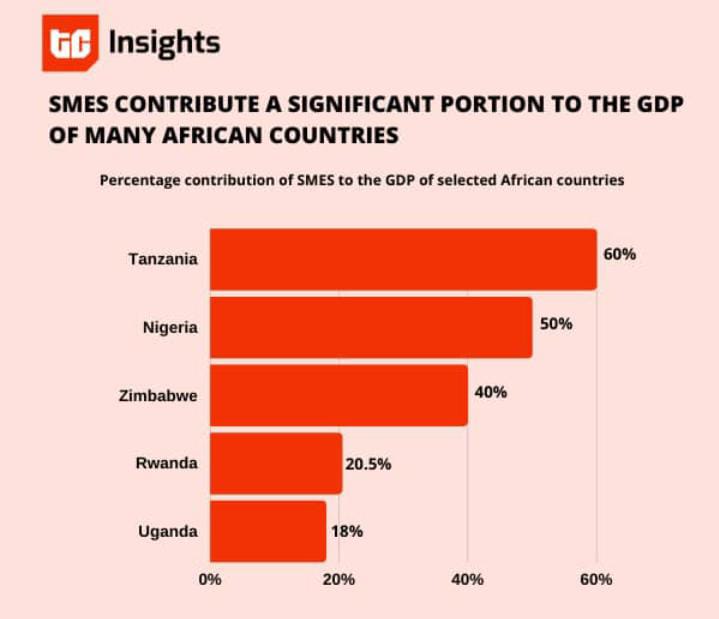
If you lead a growing business in or into Nigeria, you already know two truths: SMEs are the backbone of the economy, and daily operations can feel like juggling chainsaws. Micro, small, and medium enterprises (MSMEs) make up 96.9% of Nigerian businesses, contribute ~46% to GDP, and employ ~88% of the workforce. This is a huge engine of growth that’s still running with far too many manual processes and fragmented tools.
At the same time, the country’s digital rails are accelerating. Mobile broadband users continue to rise, and Nigerians are transacting digitally at a record pace: instant payments hit ₦1.07 quadrillion in value in 2024, with billions of transactions flowing through banks and fintech. That’s not a trivia fact; it’s the infrastructure that makes streamlined, integrated operations possible.
What “end-to-end” really means (and why it matters here)
An end-to-end (E2E) business solution pulls your core workflows (sales, customer service, inventory, purchasing, finance, HR/payroll, analytics) into one connected system. Instead of five apps and six spreadsheets that half-talk to each other, you get a single operational backbone with native integrations to payments, logistics, and compliance. The payoff is not just fewer tabs; it’s cleaner data, faster decisions, and less leakage across the value chain.
In Nigeria, the upside is amplified because of two realities:
- Digital payments are mainstream. When most of your customers can pay instantly and reliably, integrating payments into your order-to-cash flow shrinks reconciliations and speeds cash conversion.
- Regulation is enabling connectivity. The Central Bank of Nigeria’s Open Banking operational guidelines (2023) standardise secure data-sharing between banks and fintech, opening the door for safer, richer integrations into your E2E stack.
Five ways E2E solutions cut complexity for Nigerian SMEs
One source of truth for revenue, inventory, and customers. Selling across WhatsApp, a storefront, and a marketplace like Jumia can splinter stock counts and order status. E2E systems centralise catalogue, pricing, and fulfilment. That means fewer stock-outs, fewer refunds, and instant visibility on what’s selling where. This is crucial in a fast-moving consumer market.
Faster cash conversion with embedded payments. Integrating bank transfers, cards, POS, and mobile money directly into invoices and checkout removes manual reconciliation. With Nigeria’s real-time rails now processing billions of transactions annually, it’s realistic to automate settlement matching and dunning inside your ERP/CRM. The result: days of sales outstanding (DSO) come down; cash flow gets predictable.
Compliance without the headache. Cross-border traders must now submit electronic invoices (e-invoices) for imports/exports. E2E platforms that generate and transmit compliant e-docs and store the audit trail turn regulatory change into a checkbox, not a scramble.
Integrated last-mile logistics. Delivery is the moment of truth. Nigeria’s last-mile landscape has matured from informal riders to platformed fleets, making API integrations practical. Tie your order management to courier platforms and you can auto-create waybills, get live tracking, and trigger customer notifications, improving NPS while cutting WISMO (“where is my order?”) tickets.
Decisions based on today’s numbers, not last month’s spreadsheet. When sales, costs, and cash are synced in one data model, your dashboards (ideally mobile-friendly) show gross margin by channel, stock turns, and cohort retention in real time. That elevates weekly ops meetings from status updates to decision forums.
“But what about power and connectivity?”
A fair question. Nigeria’s grid instability is well-documented and costly, and it has historically pushed SMEs toward offline, manual fallbacks. Modern E2E systems blunt the impact with offline-tolerant apps, mobile-first workflows, and light bandwidth modes, so staff can keep selling and syncing once connectivity returns. Pair that with practical energy resilience (UPS, inverter/solar for critical devices) and you maintain operational continuity even when the lights blink.
A practical adoption playbook (that won’t break your team)
- Start with the value stream, not the software. Map quote-to-cash and procure-to-pay. Identify the three points where you lose time or money, typically stock accuracy, payment reconciliation, and delivery visibility. Then select modules that solve those first.
- Go cloud, go mobile, go open. Cloud systems minimise capex and facilitate remote work. Mobile-ready interfaces meet your frontline where they live (Android phones). And open APIs plus Nigeria-ready integrations (banks/PSPs using open banking standards), future-proof your stack as partners and regulations evolve.
- Integrate payments from day one. Connect to the rails your customers already use, bank transfers, POS, and mobile wallets so you’re not training behaviour, just streamlining it. Use automatic reconciliation to reclaim finance hours and reduce errors in your general ledger.
- Make logistics part of the platform. Choose an E2E tool with native courier connectors or a plug-and-play shipping layer. Your goal: print labels, book pickups, and push tracking events without leaving the system. It’s the difference between “chaos with bikes” and a repeatable delivery operation.
- Design for resilience. Ask vendors about offline mode, transaction queues, and data conflict resolution. Confirm a lightweight POS app works over spotty 3G. Then back it with minimal energy redundancy (a small inverter can keep routers, a POS device, and a laptop online for hours).
- Measure what matters. Before rollout, lock in baseline metrics: stock variance %, order cycle time, DSO, on-time delivery, and first-contact resolution in support. Review them monthly. If the system isn’t moving the needles, adjust the process before adding more tech.
Why global leaders should care
Nigeria is one of the world’s most dynamic consumer economies—young, mobile-first, and increasingly cashless. When SMEs streamline with E2E systems, market entry becomes simpler for multinationals, regional supply chains become more predictable, and partnerships with local distributors become less risky. In other words, simplifying SME operations isn’t a “nice to have”; it’s a growth strategy for anyone betting on Africa’s largest market.
Bottom line: End-to-end business solutions give Nigerian SMEs a single operational heartbeat, uniting sales, payments, logistics, and compliance. In a market where speed and resilience win, that’s not just software; it’s a competitive advantage built into the way you work.